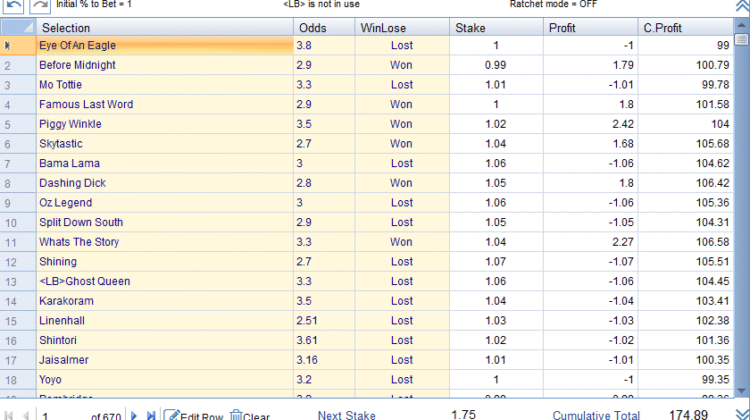
Percentage Staking
Okay, let’s have a deeper conversation about percentage staking. It’s a bankroll management strategy I’ve come to rely on quite heavily over the years. If you’re looking for a method that’s both straightforward and effective for managing your sports betting funds, percentage staking is definitely one to understand. It’s all about betting a consistent slice of your bankroll on each wager, and honestly, it’s a game-changer for maintaining discipline and managing risk.
How Percentage Staking Works
The core idea behind percentage staking is really simple: you decide on a fixed percentage of your current bankroll to bet on each selection. This percentage is usually quite small, typically ranging from 1% to 5%, but for most of my betting, I’ve found that sticking around the 1-2% mark offers a good balance between growth and risk management. The key here is that the bet size isn’t a fixed dollar amount; it changes as your bankroll changes.
Let’s walk through an example to make it crystal clear. Imagine you start with a bankroll of $1,000, and you decide to use a 2% staking plan. For your first bet, you’d wager $20 (which is 2% of $1,000). Now, let’s say that bet wins, and you make a profit of $15. Your bankroll now stands at $1,015. For your next bet, you’d again calculate 2%, but this time it’s 2% of $1,015, which comes out to $20.30.
Conversely, if that initial $20 bet had lost, and your bankroll dropped to $980, your next 2% bet would be $19.60. You see how it works? The bet size automatically adjusts, scaling up when you’re winning and scaling down when you’re losing. This dynamic adjustment is what makes percentage staking so powerful.
The Core Benefits of Percentage Staking
The advantages of using percentage staking are pretty significant, especially when you compare it to just betting fixed amounts without considering your bankroll. Firstly, and perhaps most importantly, it offers excellent bankroll protection. Because your bet sizes decrease as your bankroll shrinks, it becomes much harder to experience catastrophic losses.
Think about it, if you’re consistently betting a fixed percentage, say 2%, even a long losing streak won’t wipe out your entire bankroll. Your bet sizes will gradually reduce, conserving your funds and giving you the runway to recover when your luck turns. This aspect alone is invaluable for long-term sustainability in sports betting.
Secondly, percentage staking is designed to maximize gains during winning streaks. As your bankroll grows, your bet sizes automatically increase, allowing you to capitalize on periods of good form.
This compounding effect can really accelerate your bankroll growth when you’re picking winners consistently. It’s a far more effective way to grow your funds compared to flat staking, where your bet size remains the same regardless of whether you’re winning or losing. This ability to scale up bets during winning periods is a crucial element in achieving long-term profitability.
Finally, percentage staking promotes discipline and consistency. By adhering to a predetermined percentage, you remove a lot of the emotional decision-making from your betting process. You’re not tempted to chase losses with larger bets, nor are you likely to get overconfident and bet recklessly after a few wins.
The percentage staking plan acts as a built-in governor, keeping your bet sizes aligned with the overall health of your bankroll. This disciplined approach is essential for maintaining a level head and making rational betting decisions, rather than being swayed by short-term emotions or results. In my experience, this psychological benefit is just as important as the financial advantages.
In essence, percentage staking isn’t just a betting strategy; it’s a cornerstone of responsible bankroll management. It’s about being smart with your money, protecting your capital, and positioning yourself for long-term success in the unpredictable world of sports betting. It’s a method I’ve personally found incredibly beneficial, and I believe anyone serious about sports betting should consider incorporating it into their approach.








